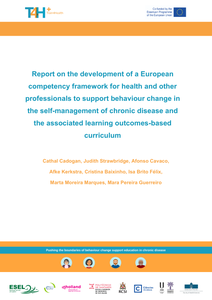Background: Alcohol use is associated with an automatic tendency to approach alcohol, and the retraining of this tendency (cognitive bias modification [CBM]) shows therapeutic promise in clinical settings. To improve access to training and to enhance participant engagement, a mobile version of alcohol avoidance training was developed.Objective: The aims of this pilot study were to assess (1) adherence to a mobile health (mHealth) app; (2) changes in weekly alcohol use from before to after training; and (3) user experience with regard to the mHealth app.Methods: A self-selected nonclinical sample of 1082 participants, who were experiencing problems associated with alcohol, signed up to use the alcohol avoidance training app Breindebaas for 3 weeks with at least two training sessions per week. In each training session, 100 pictures (50 of alcoholic beverages and 50 of nonalcoholic beverages) were presented consecutively in a random order at the center of a touchscreen. Alcoholic beverages were swiped upward (away from the body), whereas nonalcoholic beverages were swiped downward (toward the body). During approach responses, the picture size increased to mimic an approach movement, and conversely, during avoidance responses, the picture size decreased to mimic avoidance. At baseline, we assessed sociodemographic characteristics, alcohol consumption, alcohol-related problems, use of other substances, self-efficacy, and craving. After 3 weeks, 37.89% (410/1082) of the participants (posttest responders) completed an online questionnaire evaluating adherence, alcohol consumption, and user satisfaction. Three months later, 19.03% (206/1082) of the participants (follow-up responders) filled in a follow-up questionnaire examining adherence and alcohol consumption.Results: The 410 posttest responders were older, were more commonly female, and had a higher education as compared with posttest dropouts. Among those who completed the study, 79.0% (324/410) were considered adherent as they completed four or more sessions, whereas 58.0% (238/410) performed the advised six or more training sessions. The study identified a significant reduction in alcohol consumption of 7.8 units per week after 3 weeks (95% CI 6.2-9.4, P<.001; n=410) and another reduction of 6.2 units at 3 months for follow-up responders (95% CI 3.7-8.7, P<.001; n=206). Posttest responders provided positive feedback regarding the fast-working, simple, and user-friendly design of the app. Almost half of the posttest responders reported gaining more control over their alcohol use. The repetitious and nonpersonalized nature of the intervention was suggested as a point for improvement.Conclusions: This is one of the first studies to employ alcohol avoidance training in a mobile app for problem drinkers. Preliminary findings suggest that a mobile CBM app fulfils a need for problem drinkers and may contribute to a reduction in alcohol use. Replicating these findings in a controlled study is warranted.
DOCUMENT

Chronic diseases represent a significant burden for the society and health systems; addressing this burden is a key goal of the European Union policy. Health and other professionals are expected to deliver behaviour change support to persons with chronic disease. A skill gap in behaviour change support has been identified, and there is room for improvement. Train4Health is a strategic partnership involving seven European Institutions in five countries, which seeks to improve behaviour change support competencies for the self-management of chronic disease. The project envisages a continuum in behaviour change support education, in which an interprofessional competency framework, relevant for those currently practising, guides the development of a learning outcomes-based curriculum and an educational package for future professionals (today’s undergraduate students).
DOCUMENT

Dit is het eindrapport van de Global mOralHealth bijeenkomst georganiseerd door de Wereldgezondheidsorganisatie (WHO) en de universiteit van Montpellier. Docent Mondzorgkunde - Janneke Scheerman en lid van het lectoraat GGZ verpleegkunde - woonde deze bijeenkomst in oktober 2018 bij en droeg bij aan het rapport: https://www.inholland.nl/nieuws/be-helthy-be-mobile/ Als vervolg op de Global mOralHealth bijeenkomst wordt het mOralHealth handboek ontwikkeld, waaraan Janneke meeschrijft. In het handboek worden de procedures voor het ontwikkelen van mOralHealth interventies beschreven.
LINK